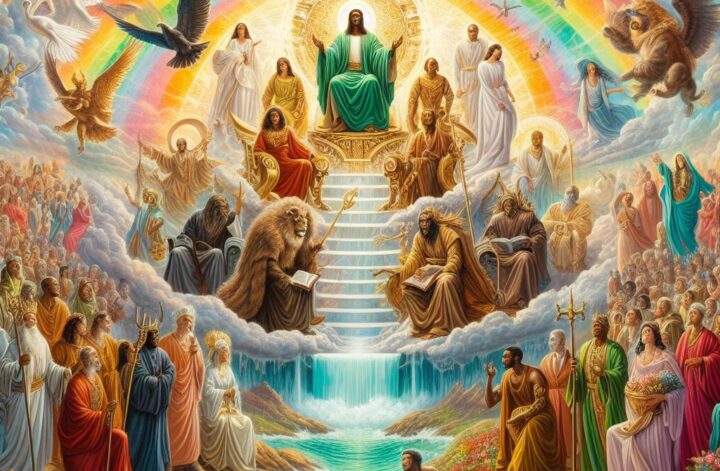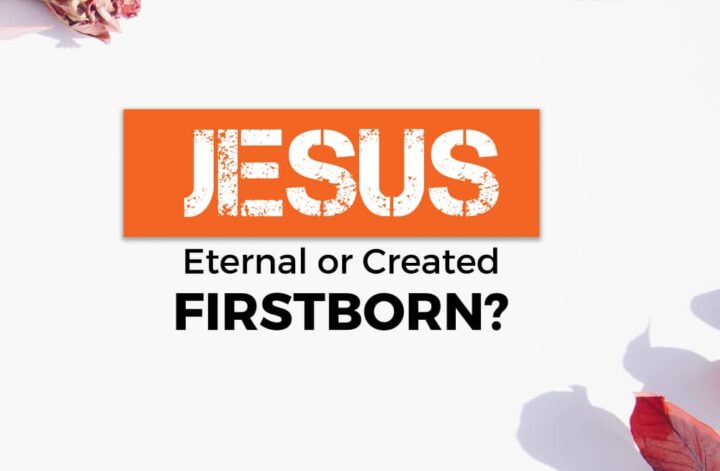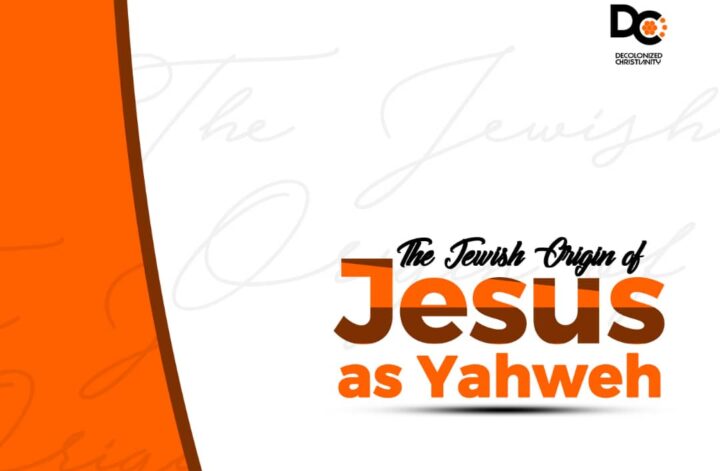Background
As mentioned earlier, John arranged his writing into two major parts based on the motif of judgment. The first part deals with the judgment (or warning/encouragement) of the Church. Some of the seven churches of Revelation received rather stern warnings and threats of judgment. For instance, certain members of the Pergamum church have embraced false teaching, leading them to sin similarly as ancient Israelites did when Balaam enticed them towards “food sacrificed to idols” and they “committed sexual immorality” (2:14). In response, Jesus says, in John’s vision, that these members of the Pergamum church should repent, or he will visit them soon and “fight against them with the sword of his mouth” (2:16). That sword kills (Rev 19:21). Similarly, Jesus warns the Philadelphian church about the possibility of losing their crowns (3:11), if they do not continue to hold fast to sound doctrine.
Chapters 6 to 20 contain the second division of the book, which details the judgment of the world, following that of the churches. But this arrangement leaves Chapters 4 and 5 hanging. Why might John do that? Among other things, he does so to make a subtle theological point of presenting Jesus as Yahweh.
The Divine Council
Chapter 4 opens with an invitation to John from Jesus to “come up here” to an open door in heaven so that John may see “what must take place after this” (4:1). “After this” refers to all that has taken place in the last three chapters. What did John see after he got up there in the Spirit? Something the Old Testament has a lot to tell us about.
The Old Testament has snapshots of throne-room scenes where a court seat in heaven to execute a judgment. Yahweh and other divine beings make up the court or divine council. The vision that John details here has allusions to other divine courtroom scenes such as in Ezekiel 1, 1 Kings 22:19-22, and Daniel 7. The example in 1 Kings 22 may be instructive here. Yahweh had already determined to judge Ahab, the king of Israel. But he left open just exactly how to achieve the judgment. So, he asked the seated court participants for ideas and opinions. When someone came up with an idea that Yahweh knew would get the job done, he approved.
Similarly, Revelation 4-5 presents a divine court seated for the business of the day. Chapter 4 details the throne room setting, and key council members present. Yahweh sits on a throne, surrounded by twenty-four elders sitting on twenty-four thrones. Scholars have yet to produce a decisive explanation of the identity of the elders. Are they human elders or divine beings? If human, why twenty-four? There is not really a straightforward precedent for the number, but some scholars hold that the number combines the old with the new—12 sons of Israel and 12 apostles of Jesus. The chapter ends with praises of Yahweh as being worthy to receive glory, honor, and power because he is the creator of all things. Note that the events covered all the way to chapter 20 have this divine council meeting as a background. The proceedings of this court continue up to chapter 20.
Chapter 5 properly begins the business of the day. In this chapter, John continues the Jesus story where the Gospels and Acts left off. The Gospels, in different theology-inflected ways, tell the story of the birth, ministry, death, burial, and resurrection of the Son. Acts briefly discusses the ascension. Luke tells us in Act that Jesus was “taken up to heaven” (1:2) in full view of a multitude of onlookers until “a cloud hid him from their sight” (1:9). What happens when he gets to heaven? Gulley writes, “Revelation 4-5 is the inauguration of Christ as the King/Priest co-regent on the Father’s throne” (79). This inauguration as a High Priest and King happened—like every consequential event, we may infer—during a divine council proceeding resulting in his seating at the right hand of the Majesty (Hebrews 1:3, Matthew 26:64, Luke 22:69, Mark 14:62). The language of seating on the throne is a language of reigning.
The scene opens with a mysterious scroll with writings on the inside and outside sealed seven times over. The seals likely cover up the writings so that no one can see the writings. An angel asks, “who is worthy to open the scroll and break its seals?” (5:2). John, not knowing what members of the divine council knew, wept when he mistakenly concluded that no one in the cosmos was worthy of opening the scroll. He likely was momentarily disappointed that he would not find out “what must take place after this” (4:1), as Jesus promised him, if no one could open the scroll.
Notice that the reading above presupposes that the content of the scroll relates to “what must take place after.” There is, however, a potential problem with this reading. Though Revelation 6—8 chronicles events of judgment on the world as each of the seven seals is broken, the scroll itself is never read. Readers are never told what the contents of the scroll are. Notice also that until all seals are removed, it is nearly impossible to read the contents of a sealed scroll. (Just imagine your college diploma having seven seals on it to keep it rolled up. You cannot read the content until you remove all seals.) So, should we read the events accompanying the breaking of each seal as the corresponding contents of the scroll? Many scholars do. Hence, Giblin writes, “In successively unsealing each and every seal the Lamb has disclosed the scroll’s substantive message” (505). But if we take this approach, we must acknowledge the literal difficulty and, hence, possible literary invention (and imagination?) on John’s part at this point. Of course, since John must have penned Revelation after the visions he saw while on Patmos, he was at liberty to use any literary device that suited him.
Let us get back to the story. Just when John felt disappointed, an elder told him to stop weeping because “the Lion of the tribe of Judah, the Root of David, has conquered, so that he can open the scroll and its seven seals” (5:5). A few things are noteworthy. First, John is no longer a mere onlooker, but becomes a participant in the proceedings of the divine council, foreshadowing the destiny of victorious believers in Christ (see 3:21). Second, only Jesus is uniquely worthy, qualified, and has earned the right to pick up the scroll and break the seals. Indeed, the twenty-four elders and the four living creatures will later explicitly spell out Jesus’ qualifications and achievements (5:9, 10):
Worthy are you to take the scroll
and to open its seals,
for you were slain, and by your blood you ransomed people for God
from every tribe and language and people and nation,
and you have made them a kingdom and priests to our God
and they shall reign on the earth.
So, Jesus became qualified to break the seals of the scroll because of the events detailed in the Gospels. It is interesting also that the elder used kingly terms to describe Jesus: Lion and Root of David. To ancients and modern people alike, the lion remains the king of the jungle. It also is likely an allusion to the messianic verse in Genesis 49:9. Similarly, Root of David almost certainly derives from Isaiah 11, another messianic passage that tells about a ruler and the peaceful state of things in his kingdom. This king is better than David, the unsurpassed beloved king of ancient Israelites. Besides, if Jesus’ salvific assignment has ransomed people for God, making them into a “kingdom and priests” destined to reign on the earth, they will need a king over them.
What kind of king is Jesus going to be?
The contents of judgment in the scroll were pre-written in John’s vision, but they were not executed as they remained rolled up and sealed. That Jesus is the only person who could break the seals imply that he alone could activate the judgments. But why would he want to set the judgments in motion? There are at least two related reasons.
First, Jesus’ patience with unbelieving persons is long but has limits. It gets to a point where even eternity will be insufficient for some people to trust in God. Indeed, John will later dramatize this point in later chapters. Second, if Jesus is going to be a perfect Davidic King, he must secure the wider borders for his ransomed people to live in peace on the earth, much like the historical David did for his own people. Hence, as part of his initial official acts as king, he must deal with the enemies of his people. Interestingly, the people who have chosen to not believe are aware of a day of judgment (6:15-17):
Then the kings of the earth and the great ones and the generals and the rich and the powerful, and everyone, slave and free, hid themselves in the caves and among the rocks of the mountains, calling to the mountains and rocks, “Fall on us and hide us from the face of him who is seated on the throne, and from the wrath of the Lamb, for the great day of their wrath has come, and who can stand?”
These people prefer being crushed by mountains to trusting in God. Hence, there cannot be safety for the ransomed people of God while these unbelieving people are still around. Indeed, they already killed some saints and will kill some more (6:10, 11). Also note that the day of wrath is attributed to both God and Jesus. They agree with the course of action.
Gulley (71) observes the parallelism of the endings in Chapters 4 and 5. Chapter 5 ends in a similar way as Chapter 4 does but with a subtle twist. In chapter 4, the twenty-four elders worshiped him seated on the throne. In chapter 5, the elders worshiped the one seated on the throne and the Lamb. It is another subtle way that John portrays Jesus as Yahweh. Data points like this one will inform later Trinitarian theologies.
Works Cited
Giblin, Charles Homer. “From and before the Throne: Revelation 4:5-6a Integrating the Imagery of Revelation 4-16.” The Catholic Biblical Quarterly, vol. 60, no. 3, 1998, pp. 500–13. JSTOR, http://www.jstor.org/stable/43723332. Accessed 12 Jan. 2024.
Gulley, R. Norman. “Revelation 4 and 5: Judgment or Inauguration?” Journal of the Adventist Theological Society, vol. 8, no. 1–2, 1997, pp. 59-81. Accessed 12 Jan. 2024.




